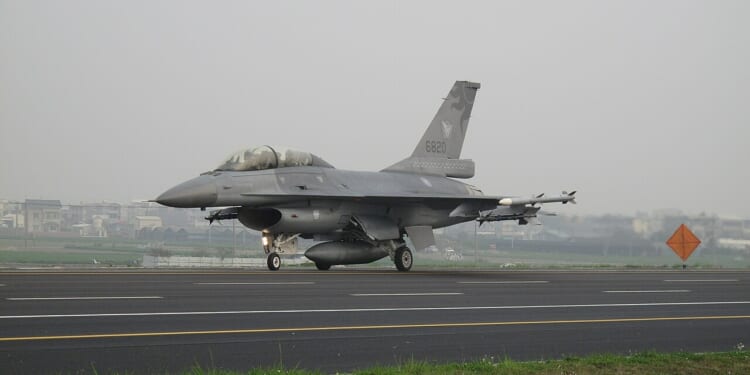General David A. Harris wants decentralized, more survivable airfields—a virtual necessity in a future conflict in which large, sophisticated airbases would probably be destroyed in the opening hours.
A recent essay by United States Air Force Lt. Gen. David A. Harris, the deputy chief of staff for Air Force Futures, outlines the way in which the US Air Force will prepare itself to fight what is likely to be the next great power war. For Harris, the key is reverting the air branch to a more agile, expeditionary mindset.
Hasn’t that always been the mindset of the United States Armed Forces? Sure. But Harris elaborates in his Defense One article by explaining that USAF operations the last 30 years or so had been underpinned by assumptions, such as the need for large, fixed airbases in distant lands.
Is this the best that the United States can do, though?
The Air Force Needs to Make Changes for a Contested Environment
Harris thinks that because of modern threats—notably from anti-access/area-denial (A2/AD), the Air Force must abandon its commitments to accoutrements such as large, lavish airbases. And he’s right on that count. The Air Force needs to get used to operating from austere environments while employing smaller footprints to deter and defeat peer rivals.
For Harris, the operations of the US military during World War II are instructive. Harris believes that the Americans back then had to operate in similarly contested environments as what the Air Force will operate inside of during the next great power war. Essentially, his call is one for a return to basics.
Should Harris’ vision be completed, the Air Force would have an increased emphasis on operations from austere airfields, dispersed basing, and would enjoy greater integration with allied nations, while utilizing much leaner, simpler logistical chains. All this is music to my ears. Indeed, investments will correspondingly be made to shift toward mobility, rapid deployment, forward positioning, training of expeditionary units, and infrastructures that support small-footprint operations.
The general calls for a greater focus on leadership development for uncertain and contested operations. He wants decision-making under ambiguity to be conditioned into the training of Air Force leaders, too.
As for the all-important angle of procurement and sustainment, the Air Force would require platforms to emphasize modularity, ease of deployment, low signature, rapid repair/maintenance under austere conditions—all while supply chains supported high-tempo, low-footprint operations.
Smaller Airfields Won’t Be Enough to Save the Air Force
Even austere airfields, though, would be insufficient to survive—let alone remain combat-effective—against the onslaught that China and/or Russia could launch upon US forces during a great power war. The US Air Force, like the rest of the US military, has functioned for more than a century as an expeditionary force—projecting power over the horizon—to take care of potential threats across the sea rather than supposedly wait for those threats to materialize.
Yet this expeditionary model only worked as well as it did because the United States enjoyed air dominance and sea supremacy, particularly after the collapse of the USSR. Adversaries had limited abilities to contest airbases far from their borders.
Further, the conflicts the Americans fought were done mostly in permissive or semi-permissive environments, such as the Balkans, Iraq, and Afghanistan. But in a peer conflict, forward bases—even small, distributed ones—are vulnerable to precision strikes, cyber disruption, and information warfare. Given how deadly both Chinese and Russian A2/AD capabilities have gotten, is any of this worth keeping America committed to this expeditionary way of war?
There’s been much talk from the Trump White House about embracing Western Hemispheric Defense. If this was ever fully embraced, though, that would mean eschewing the expeditionary model of warfare in favor of protecting territories much closer to the continental United States (CONUS) and leaving the rest of the world to its devices.
America Needs a Western Hemispheric Defense Model
Fixating on Western Hemispheric Defense would mean operating from the homeland, which would reduce Air Force platforms’ exposure to precision strikes, missile salvos, and cyber disruption targeting forward bases. It’d reduce logistical burdens of sustaining dispersed global operations. What’s more, protecting critical infrastructure and logistics inside the hemisphere may allow more sustainable long wars.
Harris, like the rest of the Pentagon, wants forward deterrence. There is merit to this view, and it has been the dominant view for decades. But none of these views take into account the way in which the global chessboard will soon require a radical reorganization of the US Air Force—indeed, the entire Pentagon.
Harris wants decentralized, more survivable—austere—airbases. The Chinese and Russians have developed such a comprehensive A2/AD capability between the two of them, which includes hypersonic missiles, any such bases will be ineffective. America must enhance its standing in its own hemisphere and focus on fighting beyond visual range.
Going forward, what’s likely to occur is a sort of hybrid model in which a minimal forward expeditionary footprint for deterrence and crisis response is formulated. A robust amount of continental defense would be needed to counter new long-range threats. And the US would need to invest in long-range strike and resilient command-and-control functions to project power globally as needed.
It’s clear that Gen. Harris and the Air Force are never going to totally abandon the expeditionary model. But at least they can get greater resources for hemispheric defense, which has been ignored for far too long.
About the Author: Brandon J. Weichert
Brandon J. Weichert is a senior national security editor at The National Interest. Recently, Weichert became the host of The National Security Hour on America Outloud News and iHeartRadio, where he discusses national security policy every Wednesday at 8pm Eastern. He is also a contributor at Popular Mechanics and has consulted regularly with various government institutions and private organizations on geopolitical issues. Weichert’s writings have appeared in multiple publications, including The Washington Times, National Review, The American Spectator, MSN, The Asia Times, and others. His books include Winning Space: How America Remains a Superpower, Biohacked: China’s Race to Control Life, and The Shadow War: Iran’s Quest for Supremacy. His newest book, A Disaster of Our Own Making: How the West Lost Ukraine is available for purchase wherever books are sold. He can be followed via Twitter @WeTheBrandon.
Image: Wikimedia Commons.

















